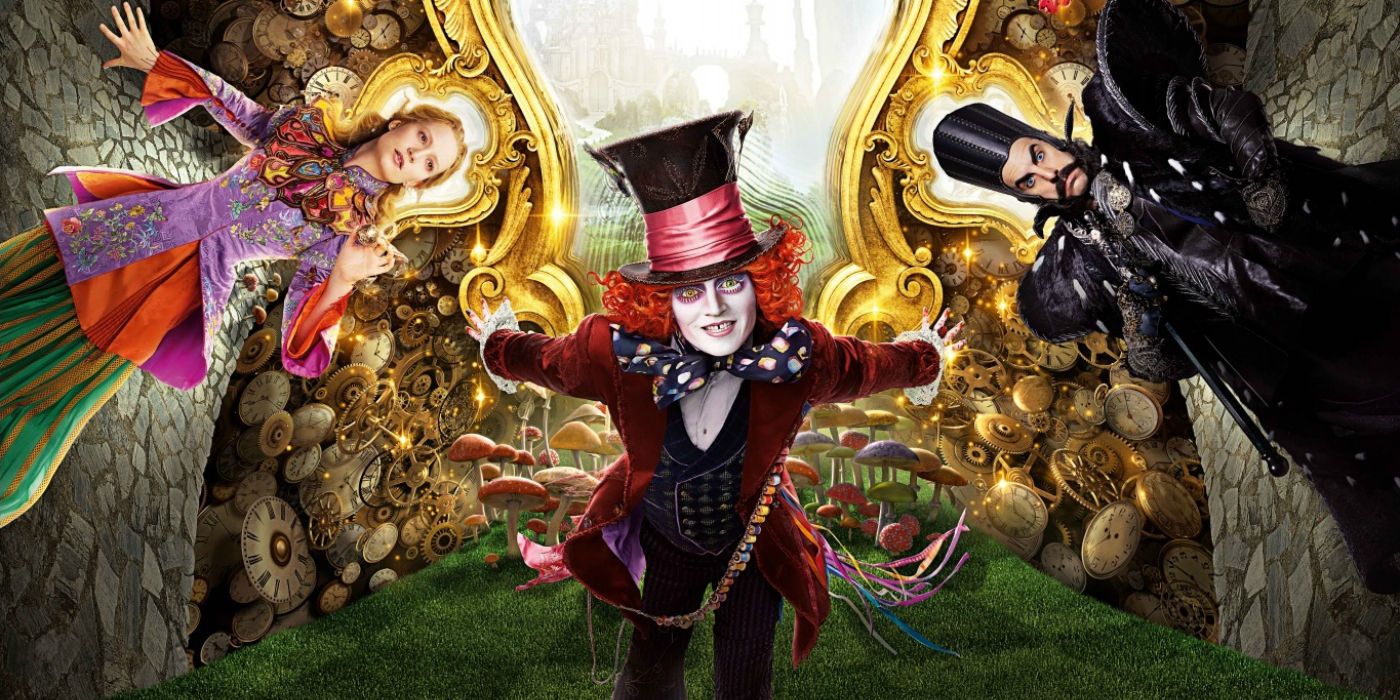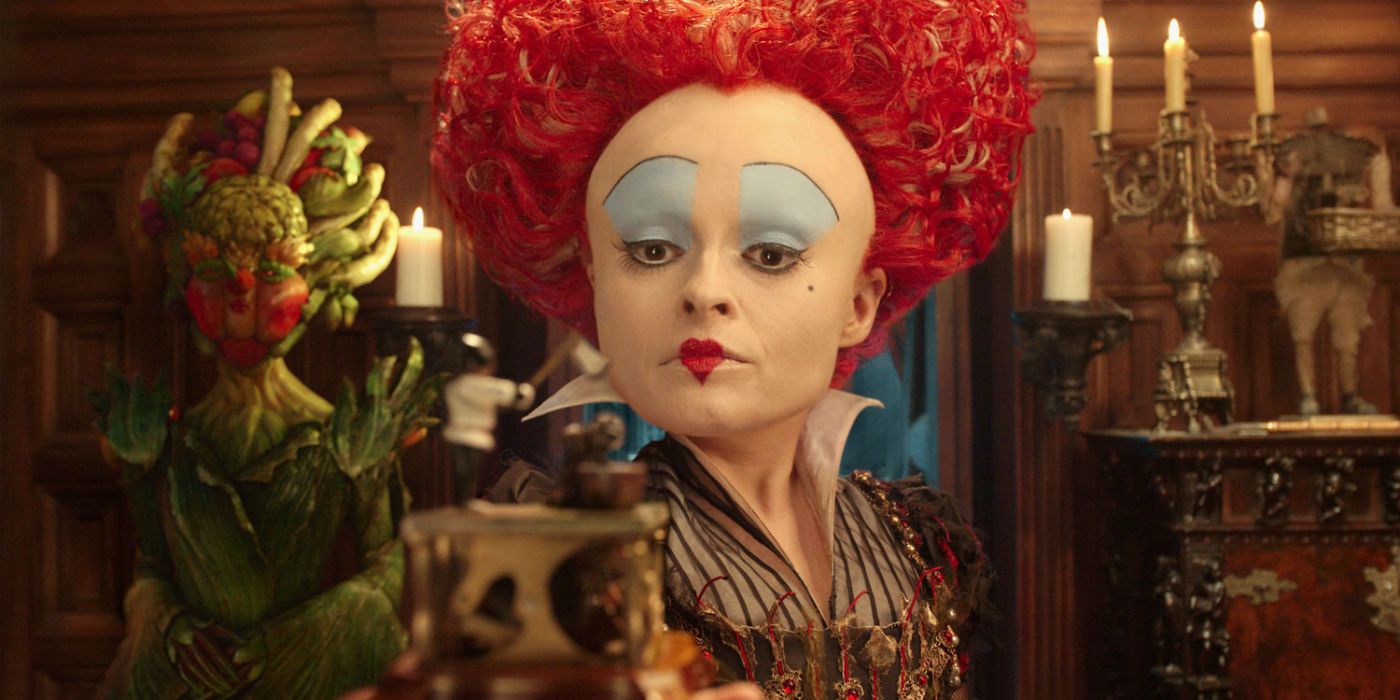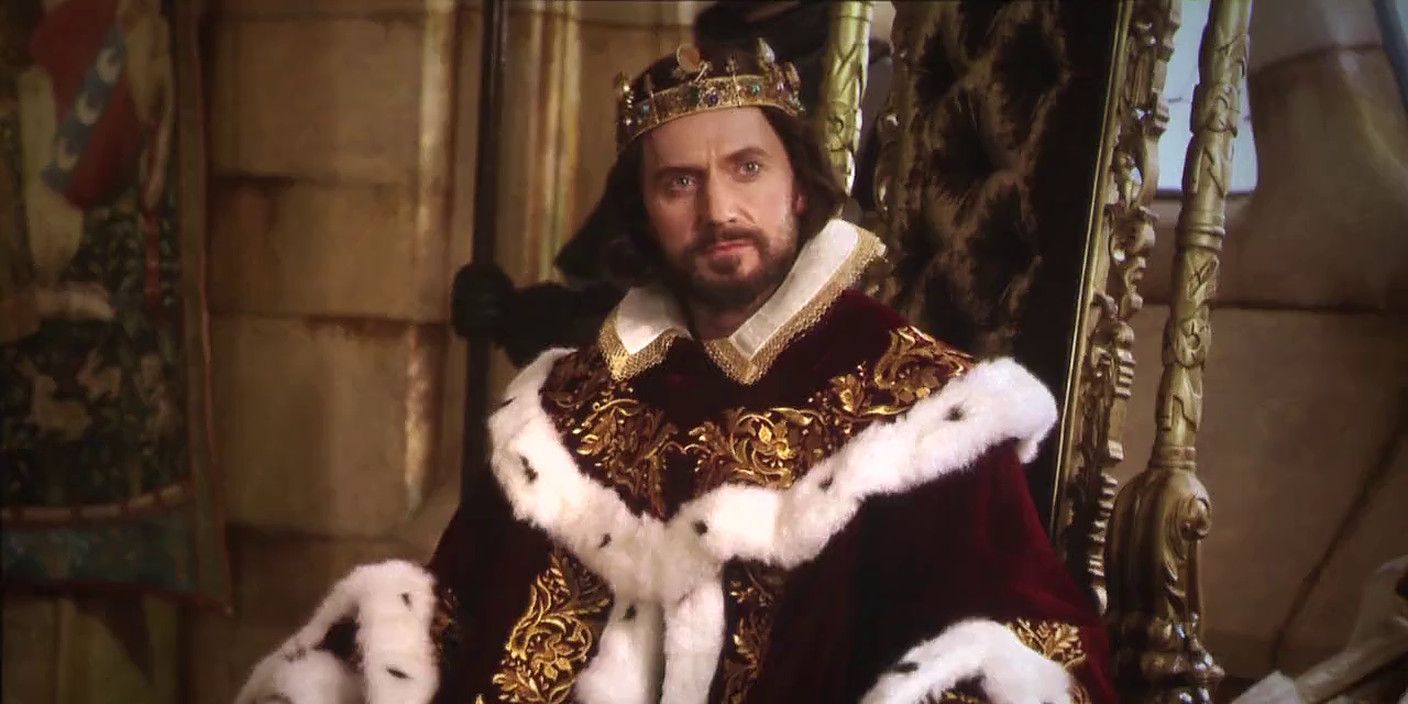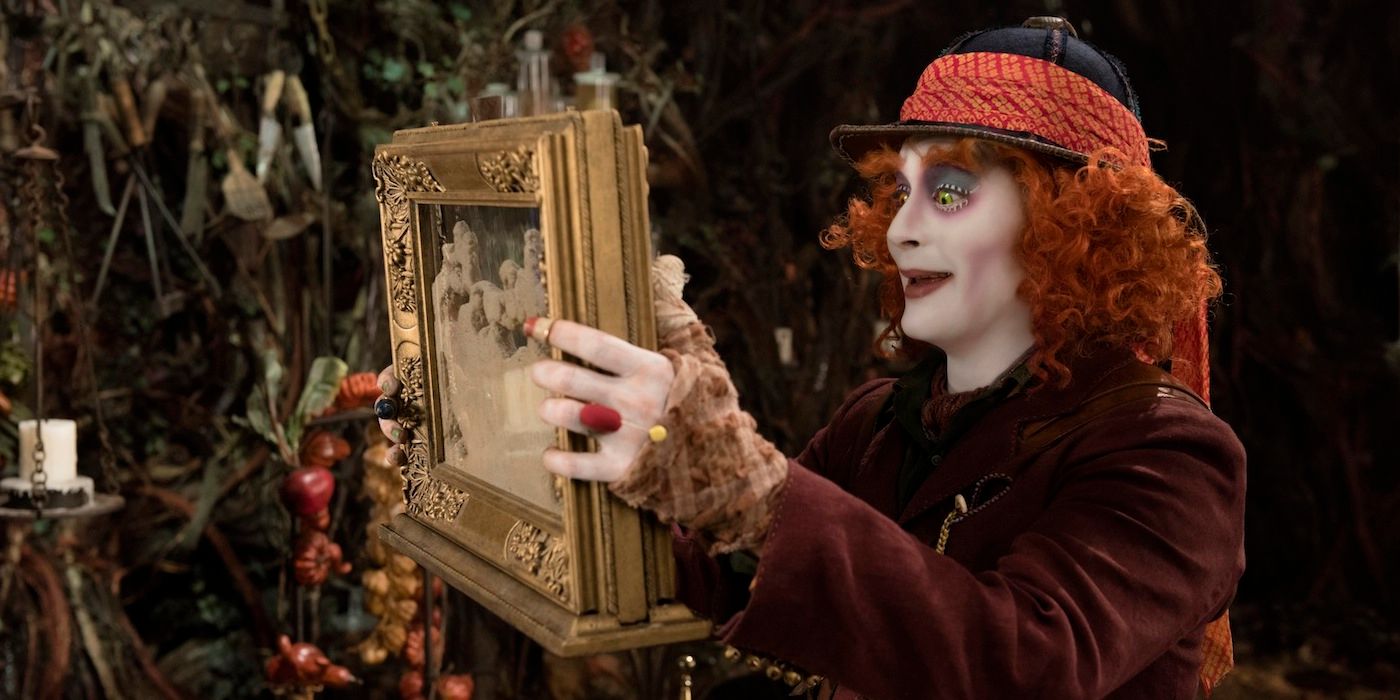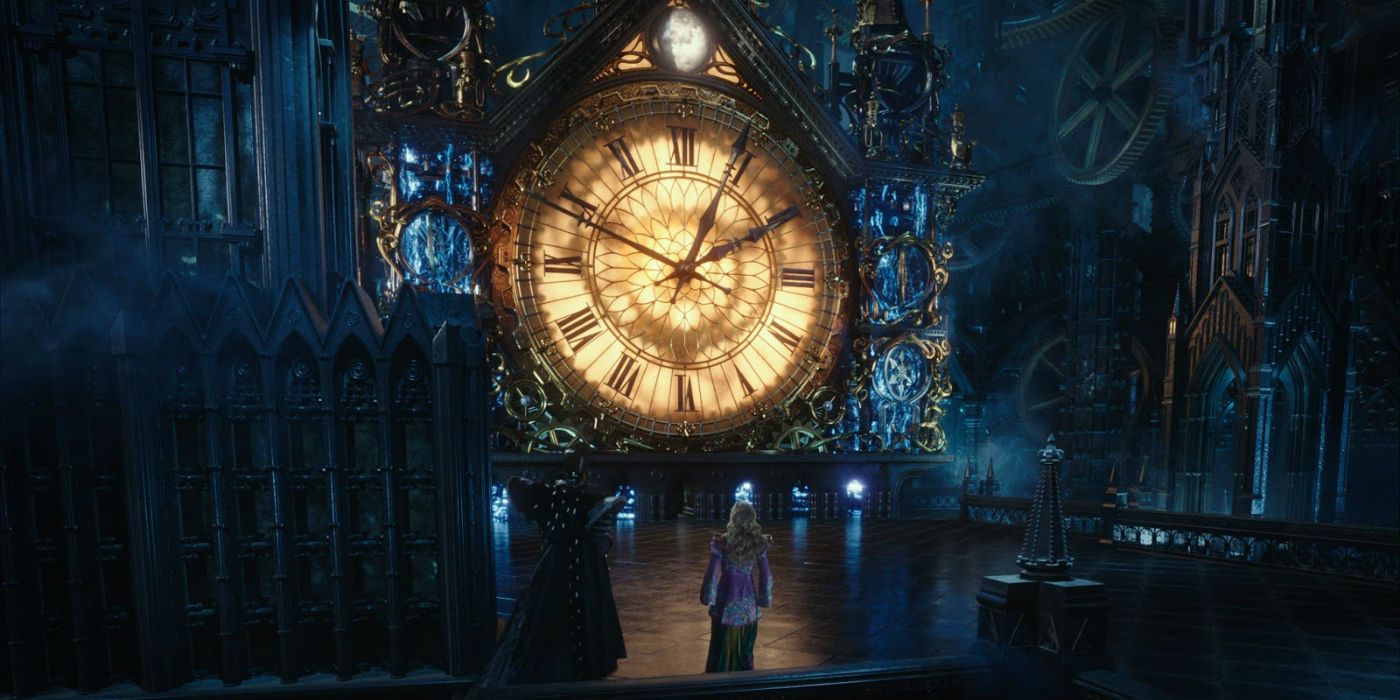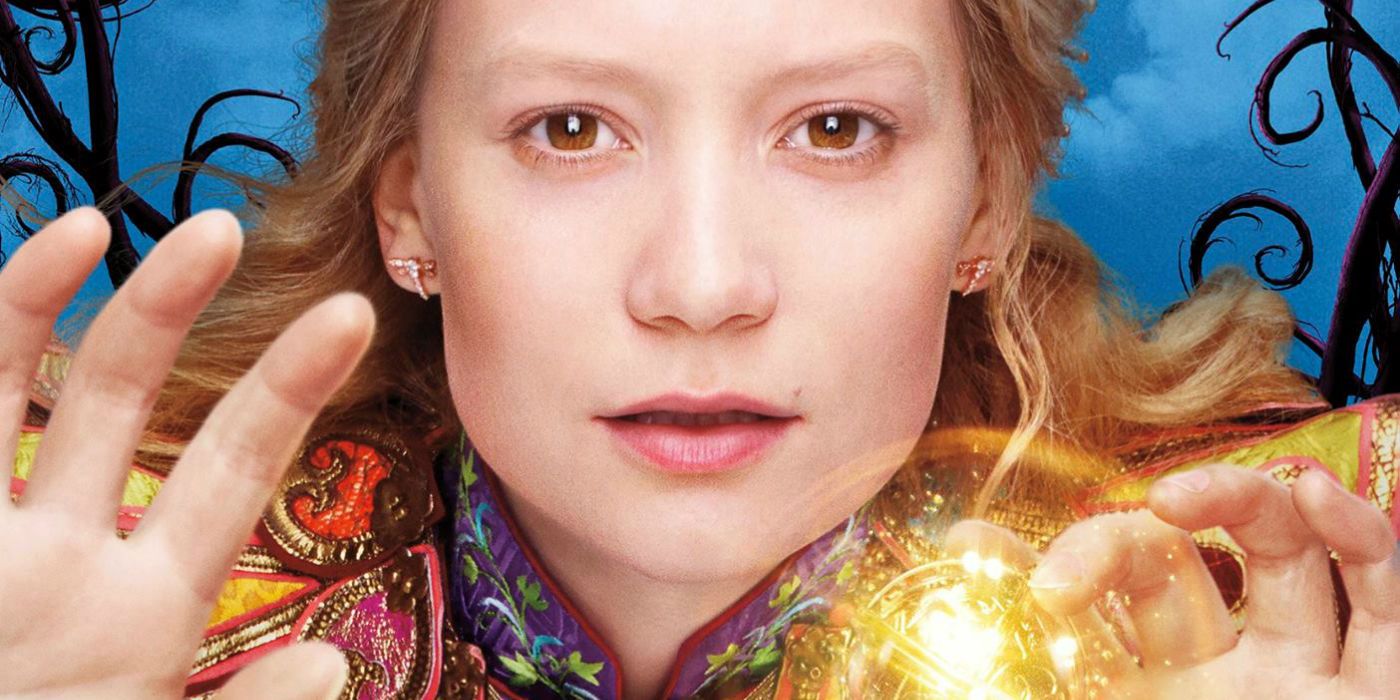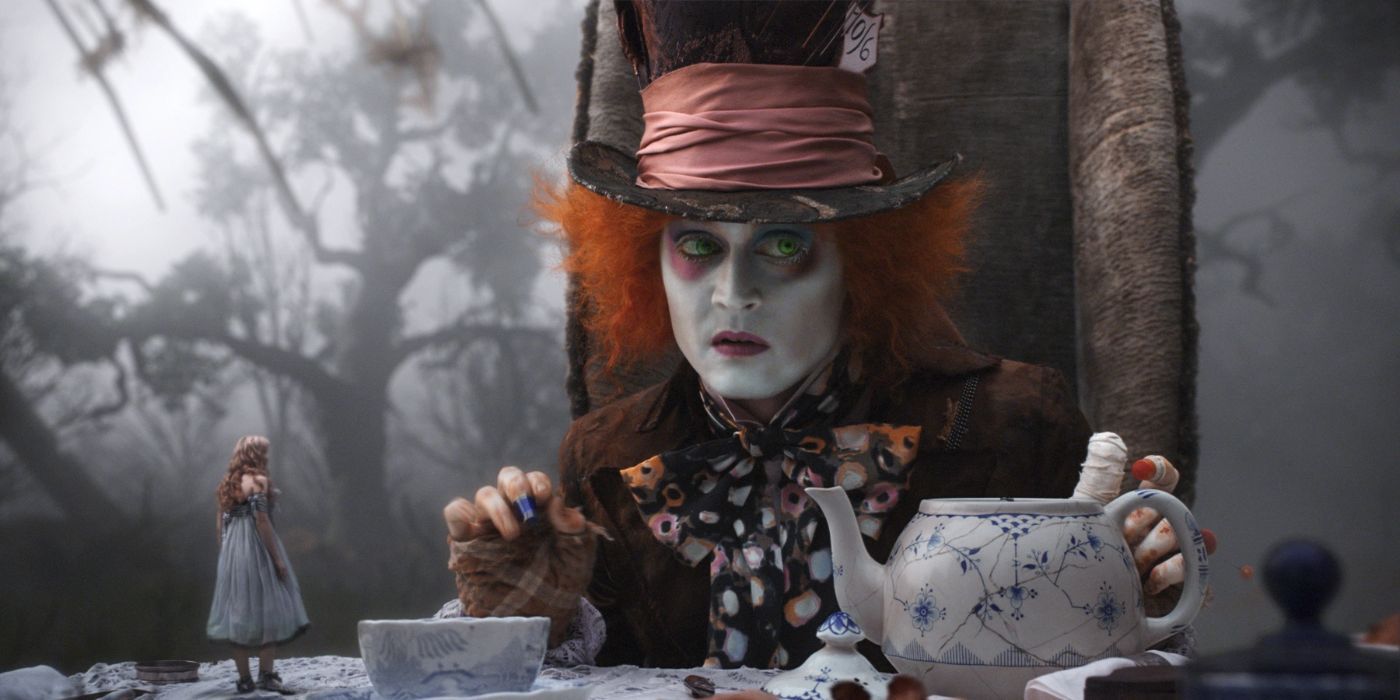Tim Burton's take on Alice in Wonderland was a huge success, but the 2016 sequel, Alice Through the Looking Glass, was a massive failure by comparison, and the studio should have seen it coming. So many versions of Lewis Carroll's classic story have been adapted for the screen, most notably the 1951 animated Disney classic, but a whole 51 years later, Burton put his spin on the fairytale with the big-budget, Johnny Depp-starring 2010 movie. Alice in Wonderland capitalized on several Hollywood trends at the time, became a huge success, and it made over $1 billion worldwide (via Box Office Mojo), making it the second-highest-grossing movie of 2010.
Though it has already disappeared into obscurity, the blockbuster movie received a sequel six years later. And while Burton didn't direct Alice Through the Looking Glass, he laid the foundation for this new Alice universe and produced the film, having a big input on many of the production's major decisions. Somehow, the sequel made less than $300 million worldwide (via Box Office Mojo), over $700 million less than its predecessor. It was a shocking underperformance, and few sequels have had such a huge drop-off from their predecessors. But though Disney didn't see Alice Through the Looking Glass's failure coming, the writing was on the wall.
6 Alice Through The Looking Glass Didn’t Have Burton’s Visual Flare
Though Alice in Wonderland was criticized for its messy digital effects, it still looked like it came from Tim Burton. Audiences show up just to see Burton's unique, gothic style, which usually comes with a Danny Elfman score too. Just like Burton's low-budget releases and his other studio movies, Alice in Wonderland is a fantastically dark film. However, though Elfman returned to score the sequel, Burton moved on. Instead, James Bobin directed the film. Bobin previously directed the 2010s Muppet movies, which were fun family films, but Bobin doesn't have Burton's distinct style. Alice Through the Looking Glass suffered because of it, and Burton was a missing key ingredient.
5 Alice Through The Looking Glass Had A Lower Budget
Sequels usually have higher budgets than their predecessors, as the stories are bigger, the set pieces and action sequences have to outdo the previous movies, and actors can negotiate higher salaries. A sequel with a lower budget is usually a bad sign, and that's the case with Alice Through the Looking Glass. The sequel had a lower budget than its predecessor, as the film was made with $170 million compared to Alice in Wonderland's $200 million budget. A lower budget means fewer resources, and that leads to a lower quality product, and Alice Through the Looking Glass clearly has worse visual effects than the first movie.
4 Alice Through The Looking Glass Had Major Box Office Competition
Though the movie's lower budget hints at the fact that Disney didn't have much faith in the movie, Alice Through the Looking Glass's release date hints at the exact opposite. The movie was released at the same time as two other potential box office giants, X: Men: Apocalypse and Warcraft. X-Men: Apocalypse was following the highest-grossing X-Men movie ever, X-Men: Days of Future Past, and Warcraft was based on a hugely successful franchise, so releasing Alice Through the Looking Glass at the same time was a brave move. Though X-Men: Apocalypse was in its second week, it would still have drawn audiences away from the sequel.
Alice Through the Looking Glass would undoubtedly have made much more if it had no competition, but going up against not one but two giant movies didn't help its box office performance. Alice Through the Looking Glass made the least amount out of the three of them, as Warcraft made $439 million (via Box Office Mojo), and X-Men: Apocalypse made $543 million worldwide (via Box Office Mojo). That's even more surprising given that the Alice franchise is the only one of the three with a billion-dollar-grossing movie. However, ironically, it was an all-around low-grossing month, as all those movies underperformed in the studios' eyes.
3 Alice Through The Looking Glass Arrived Too Late
Alice Through the Looking Glass was released a whole six years after Alice in Wonderland, and the long time between releases greatly damaged its box office potential. Though long delays don't hurt sequels like Avatar: The Way of Water, that's because Avatar 2 features advanced, ground-breaking visual effects and is an epic movie, while Alice Through the Looking Glass is no such thing. The 2016 sequel isn't a spectacle or an event movie that everybody in the world has to see to believe, especially as less money seemingly went into the digital effects.
While all movie sequels are time-sensitive when it comes to being successful, the time between movies is especially sensitive with a movie like an Alice in Wonderland sequel. Young children are Alice in Wonderland's target audience, and kids grow up a lot in six years, meaning that any young fan of the first movie might have grown out of it way before Alice Through the Looking Glass was released. Disney should have struck while the iron was hot, and if the movie was released just two years after its predecessor, it would have grossed way more at the box office.
2 Alice Through The Looking Glass Was Negatively Received
Alice Through the Looking Glass certainly didn't find success from great word-of-mouth. The film was overwhelmingly negatively received, especially by critics, as it has a "rotten" 28% on Rotten Tomatoes. Sandy Schaefer negatively reviewed Alice Through the Looking Glass, calling it "more of a shiny, yet hollow, Disney product than a meaningful continuation of Alice's story." Alice in Wonderland is also rated "rotten" with 51%, but the 2010 movie didn't have all these other elements working against it. And with the additional knowledge that the first movie isn't great, audiences would likely have been even less inclined to see the sequel.
1 Alice In Wonderland Arrived At The Perfect Time & Capitalized On 3D
2010's Alice in Wonderland arrived at a perfect time, as it was following Avatar by just one year and it was at a time when 3D was supposedly the future of cinema. The live-action remake was one of the very first 3D movies to follow the James Cameron-directed film when the format was at the height of its popularity. Alice Through the Looking Glass was released in 3D too, but the hype surrounding 3D had dwindled by 2016. And while Burton was using Alice in Wonderland to experiment with 3D and pulled off some interesting and exciting shots, Alice Through the Looking Glass treated 3D more like a novelty.

